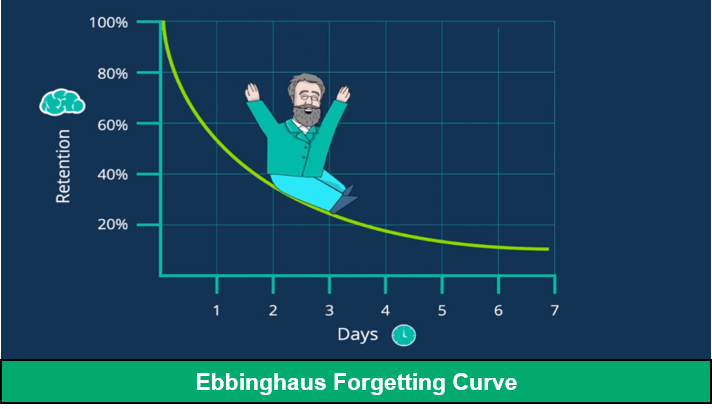How quickly do MFL students forget?
It was about 10 years ago when I first saw the Ebbinghaus Forgetting curve .
Ebbinghaus, a psychologist, conducted experiments on himself to explore the nature of memory retention and forgetting.
He did this by memorising lists of nonsense syllables and measuring his ability to recall them over time.
His findings were supported by many hundreds of studies that followed.


I wish I’d seen it earlier as it explained why students seemed to have forgotten almost everything I’d taught them the week before (around 75-80%).
I used to think there was something wrong with my teaching technique, but now I know that it’s backed up by research and it’s just what the human brain does!
I have always been very strict about students memorising vocabulary and always tested them on it weekly.
This was in part because it had helped me a lot when I was at school studying at one point four different languages.
Fortunately, I had also stumbled on one of the ways to overcome the forgetting curve (many years before the phrase ‘retrieval practice’ became common currency), which is by students revisiting what they have learned many times over the course of a week. The other graph below shows that by spacing out and reviewing learning through retrieval practice, we can slow the rate of forgetting, prevent memory decay and promote retention of knowledge, such as vocabulary and grammar.
John Dunlosky, in his excellent talk here a cognitive psychologist known for his research on self-regulated learning, emphasises evidence-based strategies for effective memorisation, particularly in the context of foreign language vocabulary. He recommends include the following key techniques, many of which the Sanako Connect language learning software supports:
Distributed Practice: This involves spreading out study sessions over time rather than cramming. Distributed practice has been shown to improve long-term retention of vocabulary words.
Retrieval Practice: Actively recalling information from memory (e.g., through flashcards or practice tests) strengthens memory and enhances learning more effectively than passive review methods like rereading. Sanako Connect software uses flashcards and allows teachers to set retrieval practice tests, which are automatically marked, thus saving valuable teacher time, and which test both the spelling and pronunciation of vocabulary.
Interleaved Practice: Mixing different topics or forms of practice within a single study session can improve learning outcomes. For vocabulary, this might mean studying words from different categories or contexts together rather than in isolation.
Dual Coding: Combining verbal and visual information, such as associating images with vocabulary words, can enhance memory by engaging multiple cognitive pathways.
Sanako Connect software allows for picture-based flashcards, which enable students to associate images with words.
Dunlosky stresses the importance of using these strategies consistently and adapting them to fit individual learning preferences and the specific demands of the material being studied.
Image credits:
Image 1 - https://elearningindustry.com/forgetting-curve-combat




